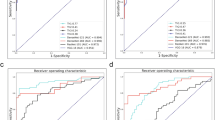Abstract
Prenatal screening with ultrasound can lower neonatal mortality significantly for selected cardiac abnormalities. However, the need for human expertise, coupled with the high volume of screening cases, limits the practically achievable detection rates. In this paper we discuss the potential for deep learning techniques to aid in the detection of congenital heart disease (CHD) in fetal ultrasound. We propose a pipeline for automated data curation and classification. During both training and inference, we exploit an auxiliary view classification task to bias features toward relevant cardiac structures. This bias helps to improve in F1-scores from 0.72 and 0.77 to 0.87 and 0.85 for healthy and CHD classes respectively.
Access this chapter
Tax calculation will be finalised at checkout
Purchases are for personal use only
Similar content being viewed by others
References
Arnaout, R., Curran, L., Chinn, E., Zhao, Y., Moon-Grady, A.: Deep-learning models improve on community-level diagnosis for common congenital heart disease lesions. arXiv preprint arXiv:1809.06993 (2018)
Baumgartner, C.F., et al.: SonoNet: real-time detection and localisation of fetal standard scan planes in freehand ultrasound. IEEE Trans. Med. Imaging 36(11), 2204–2215 (2017)
Bennasar, M., et al.: Accuracy of four-dimensional spatiotemporal image correlation echocardiography in the prenatal diagnosis of congenital heart defects. Ultrasound Obstet. Gynecol. 36(4), 458–464 (2010)
Cai, Y., Sharma, H., Chatelain, P., Noble, J.A.: Multi-task SonoEyeNet: detection of fetal standardized planes assisted by generated sonographer attention maps. In: Frangi, A.F., Schnabel, J.A., Davatzikos, C., Alberola-López, C., Fichtinger, G. (eds.) MICCAI 2018. LNCS, vol. 11070, pp. 871–879. Springer, Cham (2018). https://doi.org/10.1007/978-3-030-00928-1_98
Caruana, R.: Multitask learning. Mach. Learn. 28(1), 41–75 (1997)
Cerrolaza, J., et al.: 3D fetal skull reconstruction from 2DUS via deep conditional generative networks. In: Frangi, A.F., Schnabel, J.A., Davatzikos, C., Alberola-López, C., Fichtinger, G. (eds.) MICCAI 2018. LNCS, vol. 11070, pp. 383–391. Springer, Cham (2018). https://doi.org/10.1007/978-3-030-00928-1_44
Chen, H., et al.: Standard plane localization in fetal ultrasound via domain transferred deep neural networks. IEEE J. Biomed. Health Inform. 19(5), 1627–1636 (2015)
Gal, Y., Ghahramani, Z.: Dropout as a Bayesian approximation: representing model uncertainty in deep learning. In: International Conference on Machine Learning, pp. 1050–1059 (2016)
Kendall, A., Gal, Y., Cipolla, R.: Multi-task learning using uncertainty to weigh losses for scene geometry and semantics. In: Proceedings of the IEEE Conference on Computer Vision and Pattern Recognition, pp. 7482–7491 (2018)
Kim, B., Kim, K.C., Park, Y., Kwon, J.Y., Jang, J., Seo, J.K.: Machine-learning-based automatic identification of fetal abdominal circumference from ultrasound images. Physiol. Measur. 39(10), 105007 (2018)
Kong, P., Ni, D., Chen, S., Li, S., Wang, T., Lei, B.: Automatic and efficient standard plane recognition in fetal ultrasound images via multi-scale dense networks. In: Melbourne, A., et al. (eds.) PIPPI/DATRA -2018. LNCS, vol. 11076, pp. 160–168. Springer, Cham (2018). https://doi.org/10.1007/978-3-030-00807-9_16
Madry, A., Makelov, A., Schmidt, L., Tsipras, D., Vladu, A.: Towards deep learning models resistant to adversarial attacks. In: International Conference on Learning Representations (2018)
National Congenital Anomaly and Rare Disease Registration Service: Congenital anomaly statistics 2017 (2017)
National Health Service and Public Health England: NHS Fetal Anomaly Screening Programme Handbook Valid from August 2018. Technical report (2018). https://www.gov.uk/government/publications/fetal-anomaly-screening-programme-handbook
Pinto, N., Keenan, H., Minich, L., Puchalski, M., Heywood, M., Botto, L.: Barriers to prenatal detection of congenital heart disease: a population-based study. Ultrasound Obstet. Gynecol. 40(4), 418–425 (2012)
Simonyan, K., Zisserman, A.: Very deep convolutional networks for large-scale image recognition. arXiv preprint arXiv:1409.1556 (2014)
Simpson, J.: Hypoplastic left heart syndrome. Ultrasound Obstet. Gynecol. Official J. Int. Soc. Ultrasound Obstet. Gynecol. 15(4), 271–278 (2000)
Sinclair, M., et al.: Human-level performance on automatic head biometrics in fetal ultrasound using fully convolutional neural networks. In: 2018 40th Annual International Conference of the IEEE Engineering in Medicine and Biology Society (EMBC), pp. 714–717. IEEE (2018)
Szegedy, C., et al.: Intriguing properties of neural networks. In: International Conference on Learning Representations (2014). http://arxiv.org/abs/1312.6199
Van Velzen, C., et al.: Prenatal detection of congenital heart disease-results of a national screening programme. BJOG Int. J. Obstet. Gynaecol. 123(3), 400–407 (2016)
Yao, J., Pan, W., Ghosh, S., Doshi-Velez, F.: Quality of uncertainty quantification for Bayesian neural network inference. arXiv preprint arXiv:1906.09686 (2019)
Yeo, L., Luewan, S., Romero, R.: Fetal intelligent navigation echocardiography (fine) detects 98% of congenital heart disease. J. Ultrasound Med. 37(11), 2577–2593 (2018)
Acknowledgements
Support from Wellcome Trust IEH Award iFind project [102431]. JT is supported by the ICL President’s Scholarship.
Author information
Authors and Affiliations
Corresponding authors
Editor information
Editors and Affiliations
Rights and permissions
Copyright information
© 2020 Springer Nature Switzerland AG
About this paper
Cite this paper
Tan, J. et al. (2020). Automated Detection of Congenital Heart Disease in Fetal Ultrasound Screening. In: Hu, Y., et al. Medical Ultrasound, and Preterm, Perinatal and Paediatric Image Analysis. ASMUS PIPPI 2020 2020. Lecture Notes in Computer Science(), vol 12437. Springer, Cham. https://doi.org/10.1007/978-3-030-60334-2_24
Download citation
DOI: https://doi.org/10.1007/978-3-030-60334-2_24
Published:
Publisher Name: Springer, Cham
Print ISBN: 978-3-030-60333-5
Online ISBN: 978-3-030-60334-2
eBook Packages: Computer ScienceComputer Science (R0)





